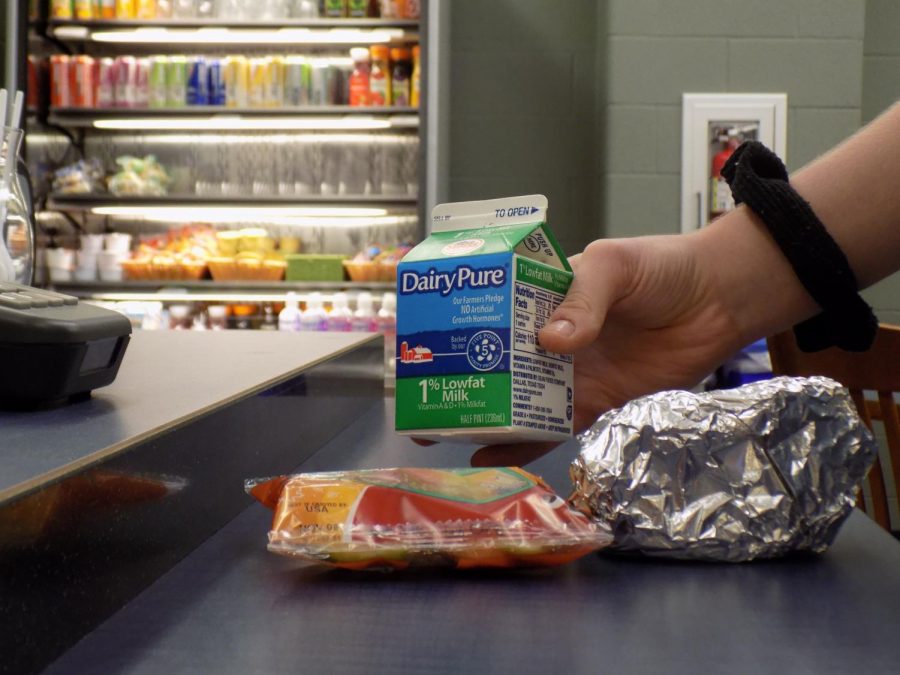School lunch policies require clarification
A student purchases 3 of the 5 elements of a potential school lunch. Of these, milk is not a requirement.
October 29, 2018
With the addition of the Growler cafe in the library, students have been granted a variety of new options to improve their school lunch experience. The cafeteria’s selection of hot meals is supplemented with the Growler’s soup and sandwiches, allowing students a daily lunch choice with numerous options. Students with dietary restrictions, either by choice or for medical reasons, feel as though their options are limited. In both the Growler and cafeteria, there aren’t a whole lot of gluten free or dairy free options, or options for vegetarians. At first glance, options do seem limited; however, the issue isn’t a lack of students with dietary restrictions or Chartwells policy, but rather a series of miscommunications between the two.
One of the major complaints from students with dietary restrictions, and even students without, is the requirement of milk with meals. Many wonder why they have to purchase a milk even if they aren’t going to drink it. The answer to this is simple: milk isn’t a required element in a student lunch, and hasn’t been for the last 8 years. In order to qualify as a school lunch, a student needs 3 of these 5 elements: protein, grains, fruits, vegetables, and milk. Of these 5, the only real requirement is a fruit or vegetable.
Questions have also been raised about beverage substitution for students who are lactose intolerant. The idea behind this is that water should be a valid option instead of milk. And, for students with an official doctor’s note, it is. This leads one to wonder about students who are dairy free by choice rather than necessity. Without a doctor’s note, this substitution is not permitted because milk isn’t required in a meal, so students aren’t forced to purchase it. The school has also installed water filtration systems to improve water quality and save bottles, so students in need of a drink and unwilling to pay extra to add water to their lunch instead of milk have the option of using either the filtration systems to fill a bottle from home or water fountains installed by nearly every bathroom in the building.
Vegetarian options for students who choose not to eat meat are few and far between, a point acknowledged by Chartwells head, Michelle Morgan. Morgan said Chartwells has tried to include choices for vegetarians in the past and they just don’t sell. “Even salads don’t go unless they have chicken poppers in them,” Morgan said. She pointed out that cafeteria dishes that incorporate meat can be made into vegetarian dishes at a request by simply excluding the protein portion of the lunch. As long as students purchase 3 of the 5 lunch requirements, this is entirely possible. Pizza is also always available to all students and fits the restrictions of many vegetarian diets. A non-meat eater herself, Morgan has agreed to speak with any and all students who would be interested in incorporating more options for vegetarians in either the Growler or the Cafe.
Due to strict regulations directly from the government, changes to the menu are difficult to introduce, however with increased communication between students and Chartwells staff, it is entirely possible to introduce more options for those with dietary restrictions ensuring a better lunchroom experience for students and Chartwells staff alike.

Ms. Daugherty • Oct 29, 2018 at 7:41 pm
Great editorial, Maddie! Very informative, and thanks for setting the record straight.